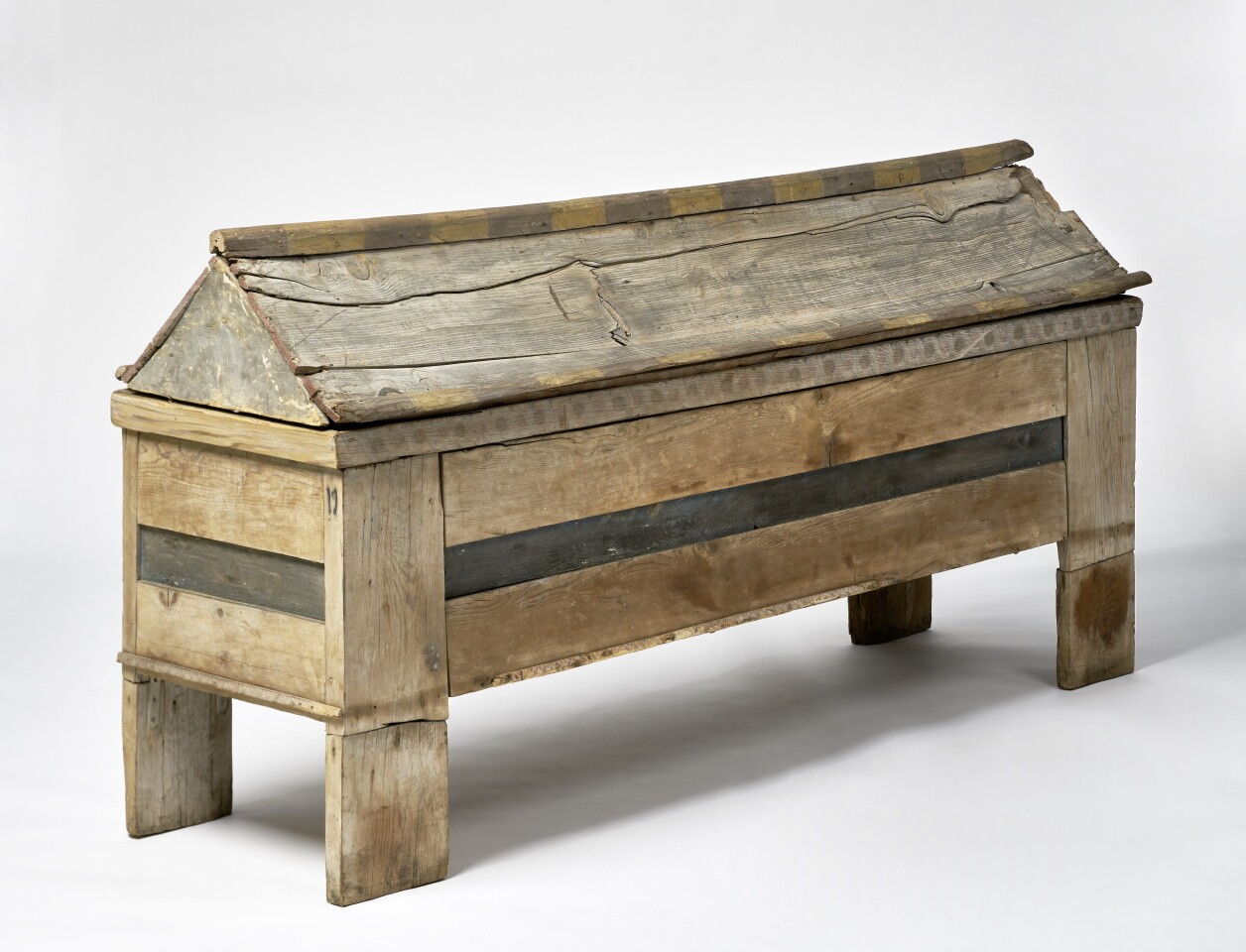Der hölzerne Sarg stammt aus einer kleinen Nekropole östlich der Pyramide des Niuserre im antiken Busiris (Abusir, Ägypten). Dieses Areal wurde von 1902 bis 1904 von Ludwig Borchardt, dem Entdecker der Nofretete, untersucht. Dabei wurden 31 griechische Bestattungen des 4. Jahrhunderts v. Chr. entdeckt. Über die Deutsche Orientgesellschaft (DOG) gelangte der Sarg 1904 in das damalige Kestner-Museum.
Die griechischen Gräber enthielten u.a. Holzsärge sowohl in anthropoider als auch Truhenform, zu der auch der des Museum August Kestner gehört. Von den insgesamt neun truhenförmigen Särgen verblieben nach Abschluss der Ausgrabungen zwei in Kairo. Sechs kamen nach Deutschland und wurden an Museen in Berlin sowie Leipzig, Bonn, Heidelberg und Hannover verteilt. Der Verbleib eines weiteren Sargs ist unbekannt. Der Sarg in Hannover ist neben dem des Akademischen Kunstmuseums in Bonn das einzige komplett erhaltene Exemplar aus den Grabungen der DOG.
Der Hannoversche Sarg wurde innerhalb der Ziegelsteinvermauerung einer Mastaba entdeckt. Als gewisses Kuriosum wurden die Beine abgesägt und neben dem Sarg bestattet. Im Sarg selbst befand sich zum Zeitpunkt der Aufdeckung noch der in Binden gewickelte, männliche Leichnam. Er ruhte mit dem Kopf auf einem mit Holzspänen gefüllten Kissen. In die Leichenbinden waren Mohnkapseln eingewickelt (wahrscheinlich in rechter Hand haltend). Außerhalb des Sarges sicherten die Ausgräber ein Paar Lederschuhe. Unter dem Sarg fanden sich noch die Überreste eines Lederbeutels sowie Fragmente von roten, gelben und braunen Filzbinden. Bedauerlicherweise hat sich von Beifunden nichts erhalten. Es ist davon auszugehen, dass sie wahrscheinlich nie nach Hannover gelangt sind. (AVS)




